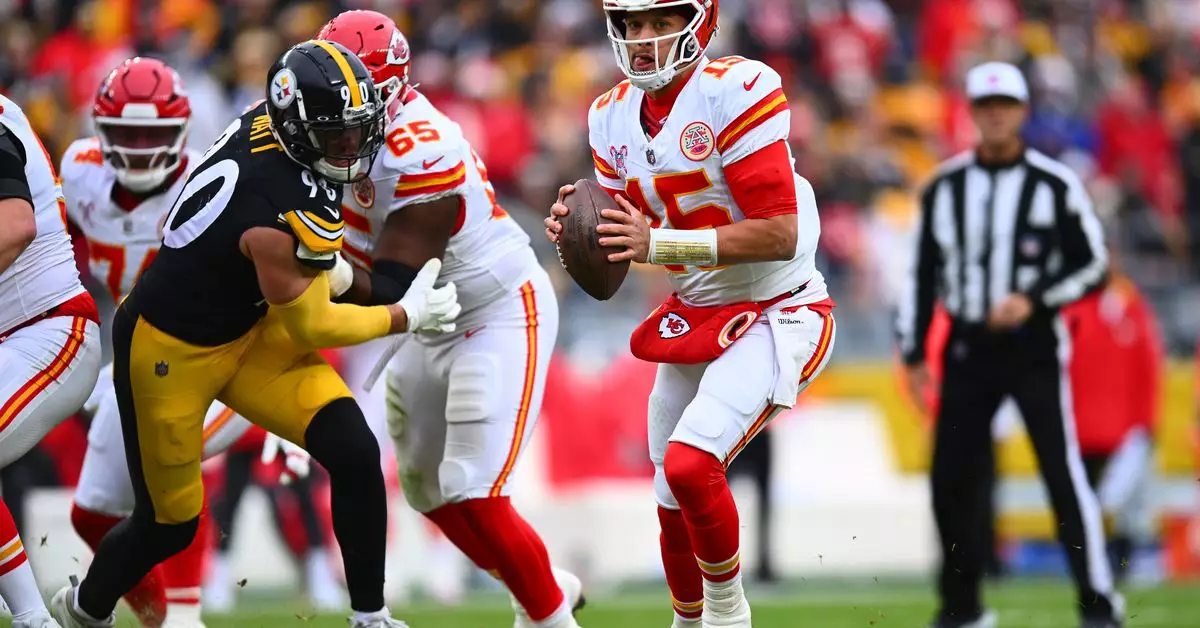Netflix has recently made headlines for its groundbreaking success in the realm of live sports broadcasting, particularly on Christmas Day when the platform showcased NFL games. The audience response was nothing short of remarkable, with Nielsen ratings indicating that the games were the “most-streamed NFL games in US history.” The Kansas City Chiefs and Pittsburgh Steelers featured an average minute audience (AMA) of 24.1 million, while the matchup between the Houston Texans and Baltimore Ravens boasted an even higher AMA of 24.3 million. Collectively, these games attracted nearly 65 million viewers, highlighting the growing appeal and viability of streaming platforms as distribution channels for live sports.
Despite previous challenges, such as the overload experienced during the highly publicized boxing match between Mike Tyson and Jake Paul, Netflix’s infrastructure rose to the occasion during the NFL broadcasts. The platform’s ability to handle over 60 million households tuning in simultaneously is a significant achievement, indicative of improvements made to its streaming capabilities. This stability allowed not only the comprehensive coverage of the games but also the accompanying star-studded halftime performances, featuring icons like Mariah Carey and Beyoncé. Given the increased viewership demands, the successful streaming of these events marks a crucial step for Netflix in its evolution as a mainstream sports broadcaster.
In addition to the intense on-field competition, Netflix has embraced the cultural significance of halftime shows, particularly the astounding performance by Beyoncé. The “Beyoncé Bowl” halftime show registered a staggering 27 million live viewers, warranting Netflix’s decision to offer a standalone replay of the performance. This move not only caters to Beyoncé’s vast fanbase but also aligns with the trend of enhancing user engagement through exclusive content. The partnership of sports with entertainment during these broadcasts creates a multifaceted viewing experience that could entice more subscribers to the platform, amplifying its battle against market competitors.
The impact of Netflix’s entry into live sports broadcasting extends beyond this Christmas Day event. The locked-in broadcast deal with the NFL secures the presence of Christmas games on the platform for at least the next two years, marking a significant commitment to sports entertainment. Competing entities, such as the NBA, also faced challenges in the wake of these NFL broadcasts. Despite the overlapping schedules, the NBA reported that it achieved the “most-watched Christmas Day in five years,” averaging 5.25 million viewers per game in the U.S. This indicates that, while Netflix’s foray may have disrupted traditional viewership dynamics, it also elevated the overall landscape for holiday sports broadcasts and may encourage future integration among leagues.
Looking Ahead
Netflix’s strategic move into live NFL broadcasting is a game changer, both in terms of audience engagement and the technological capabilities of streaming platforms. By successfully managing large viewership numbers while integrating cultural events, Netflix is paving the way for the future of sports entertainment. As the streaming wars continue, the emphasis on not just live games but also complementary performances and exclusive content will likely become a focal point for platforms vying for dominance in this lucrative sector. The evolving relationship between streaming services and live sports will be keenly watched, as it promises to reshape how audiences consume sports in the years to come.


Leave a Reply